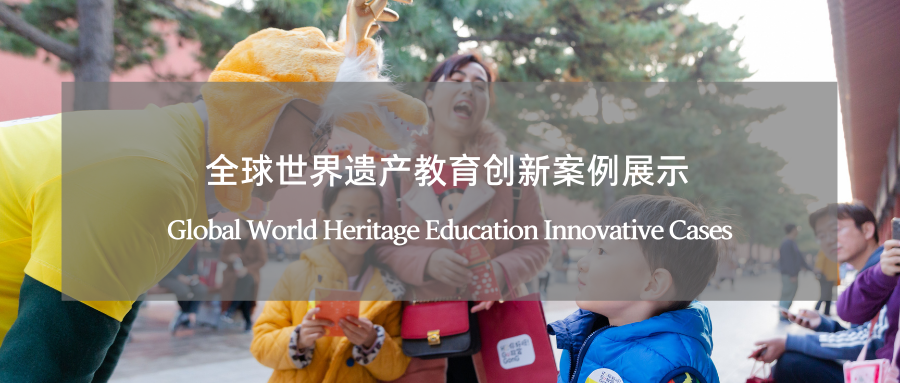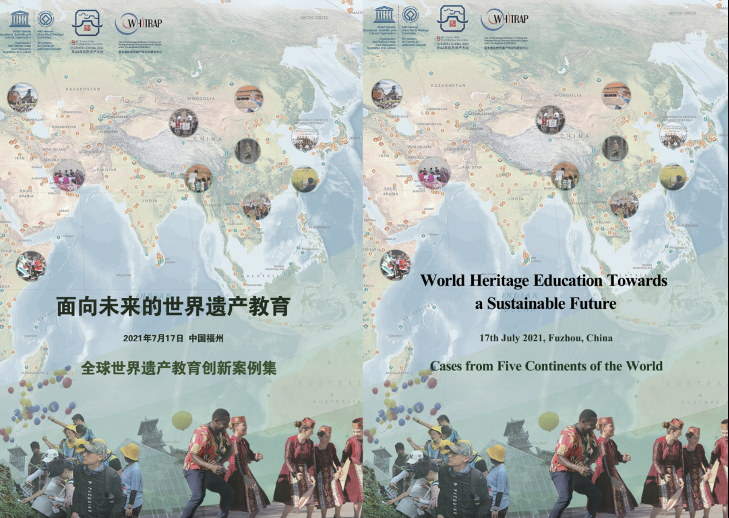| Outstanding Cases VOL.4 | Forbidden City and Dali Dong Village (China) |
| PublishDate:2021-10-27 Hits:5700 |
I. Background World Heritage Education (WHE) is not only one of the most important ways to connect people to world heritages, but also a key to a creative solution for sustainable development of the heritage sites. With the accelerated development of the Internet technology in recent years, more and more innovators have accessed the heritage education field. They have not only promoted the regeneration of the contents and methods of heritage education, but also make it possible for heritage education to break existing boundaries and modes.
To correspond to and promote this reform, WHITRAP initiated this Global Innovation Cases of World Heritage Education in the hope to have a fine collection of forward-looking exemplar heritage education cases. The aim is to promote the sharing of relevant international experience and future cooperation, and contribute to the comprehensive and sustainable development of heritage sites. Cases were expected to be characterized essentially by global demonstrativeness which was further supported by four professional criteria of innovation, technology, cooperation and sustainability.
After a month-long application, candidate cases entered the selection stage and were officially presented at the 44th Session of the World Heritage Committee. This initiative received enthusiastic responses from all parties, and WHC’s official website also published WHITRAP’s global call for case studies on World Heritage Education. This initiative has received warm responses from all parties. Nearly 100 WHE innovation cases were collected from five continents of the world within a month, highlighting the emerging trends in various innovation fields and providing an important reference to explore the topic in the future. With reference to future development and model innovation as a global model, five qualities of future-oriented WHE are summarized as follows:
1) Enhancing social inclusiveness and cohesion via heritage education especially for the youth based on heritage protection;
2) Promoting multi-disciplinary integration through cross-boundary innovations and exploring a new model of multi-party cooperation through internal and external combination;
3) Exploring new heritage education concepts and methods according to local conditions via creativity and technology;
4) Rationalizing the use of Internet and digital technology to involve more people online and offline in heritage education;
5) Discovering heritage values and using education as an empowering tool to promote the creative innovative and sustainable development of heritage sites.
Based on the five qualities, the collection of 10 outstanding cases will present their innovation and exemplary significance. Those cases demonstrate a wide range of possibilities of the future WHE from the perspectives of life-time education, digitalization, cyber technology, cultural tourism development, world peace, social integration and philosophy, representing the emerging trends in various innovation fields. The thought-provoking cases provide a guideline for us to explore possible actions for the future WHE development. In the series of the presentation of outstanding cases, we will focus on the educational activities for world heritage sites or specific heritage values, presenting their practical effects and valuable lessons over the past five years.
In the last issue, from the two cases from Kenya and China, we have learned their experience of “exploring new heritage education concepts and methods according to local conditions via creativity and technology”. This issue will involve two cases: “Hello, Forbidden City! Heritage Education Project” (China, Beijing) and “Multi-dimensional Exploration of Children’s Heritage Education——Take Dali Dong Village in Guizhou as an example” (China, Guizhou). Let’s discover their innovative features in “rationalizing the use of Internet and digital technology to involve more people online and offline in heritage education”.
II. Presentation of Outstanding Cases VOL.4
1. Hello, Forbidden City! Heritage Education Project (China, Beijing)
1) Introduction
“Hello, Forbidden City!” is an educational project jointly planned by Forbidden City Academy and TOSEE Art Education Co. Ltd., focusing on Chinese 3-12-year-old teenagers and their families, in order to convey the artistic and cultural value of the Forbidden City, a world cultural heritage and carry forward Chinese classic traditional art and culture.
“Hello, Forbidden City!” project has been officially launched since 2018, fully exploiting the long history of the Forbidden City and the Palace Museum, with more than 1.86 million collections and their cultural connotations, relying on the profound academic tradition of the Palace Museum since its establishment 95 years ago, with the help of the strength of heritage protection experts in various fields of the Forbidden City, integrating cultural and art-related educators, using the Internet and scientific and technological means and multimedia forms of “listening+watching+learning”, planning for the public, especially the young people.
By 2021, “Hello, Forbidden City!” project has spanned online and offline, traditional publishing and digital publishing, launched “Hello, Forbidden City!” audio and video programs, activities, culture system courses and other educational products. Among them, “Hello, Forbidden City!” was selected by China’s State Press and Publication Administration as one of the best digital publishing projects in China in 2019 because of its high-quality content, outstanding innovation and meeting the people’s learning and reading needs in the all-media era.
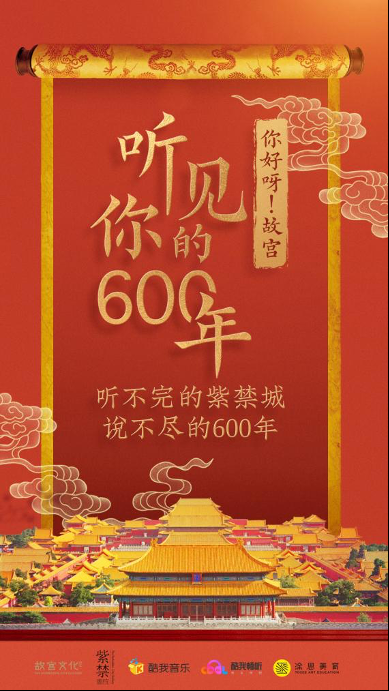 “Hello, Forbidden City!” promotional audio
2) Technological Application
“Hello, Forbidden City!” education project breaks the form of pure offline practice of previous heritage education projects, and puts “Hello, Forbidden City!” digital publishing product, which is broadcast on the Internet video and audio platform. Each episode lasts for 10 minutes, which is convenient for primary and secondary school students to listen to before going to bed and getting up early, so that heritage education can be integrated into the school study and family study of primary and secondary school students.
“Hello, Forbidden City!” education project is based on the museum’s official cultural relics basic information to carry out multi-angle, multi-dimensional and multi-level value mining, which is written, proofread and reviewed by art scholars and experts and scholars of major museums to ensure that the cultural relics information and historical background are correct. In order to help teenagers better remember and retain their knowledge of cultural relics, the program also launched an electronic knowledge card matched with audio, which not only refines the highlights of cultural relics and deepens their understanding, but also saves or prints them, so that parents and children can learn and grow together.
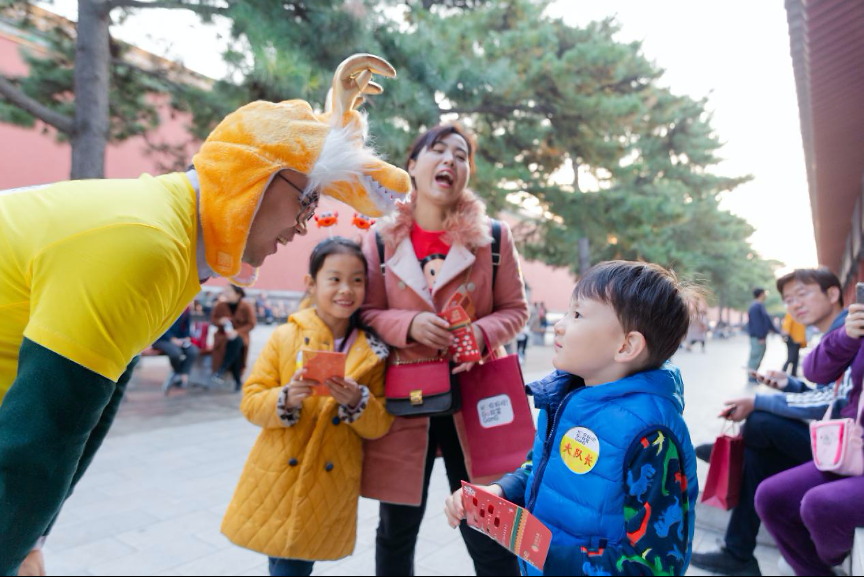 “Hello, Forbidden City!” offline exploration activities
3) Exemplary Significance
“Hello, Forbidden City!” project creatively draws on the diversified forms of educational products in the current Internet era in China. The project deeps into the Forbidden City culture, invites more than ten experts from the Forbidden City to conduct academic checks, and invites art education and art history scholars to develop professional content into radio dramas that children like to hear, digitalize educational courses and spread them widely by using the Internet platform to maximize the popularization of heritage knowledge to Chinese children. At the same time, cultural creation, materials and other materials related to curriculum programs are also launched simultaneously, which is convenient for teenagers to learn heritage education at home. In addition to digital educational products, in order to provide diversified educational products for teenagers, “Hello, Forbidden City!” has successively launched a series of children’s picture books, offline curriculum activities, research and exploration products and so on to promote cultural heritage as a part of children’s daily learning at different levels.
“Hello, Forbidden City!” project is a new attempt of cooperation between heritage sites and various social forces. The Forbidden City, a world heritage site has a large number of professional researchers. However, due to its own nature, human factors and other reasons, it is difficult to customize and develop esoteric professional content for teenagers and children, so it is necessary to introduce high-quality professional third-party educational institutions for assistance. The third-party educational institution has six years of experience in museum curriculum research and development. According to children’s psychology and Chinese primary and middle school students’ curriculum teaching material system, the academic research content of the heritage site is translated and presented in a way that children like. At the same time, it will help the heritage site connect with publishing houses, network platforms, design and production institutions, deepen cooperation mode to realize the project.
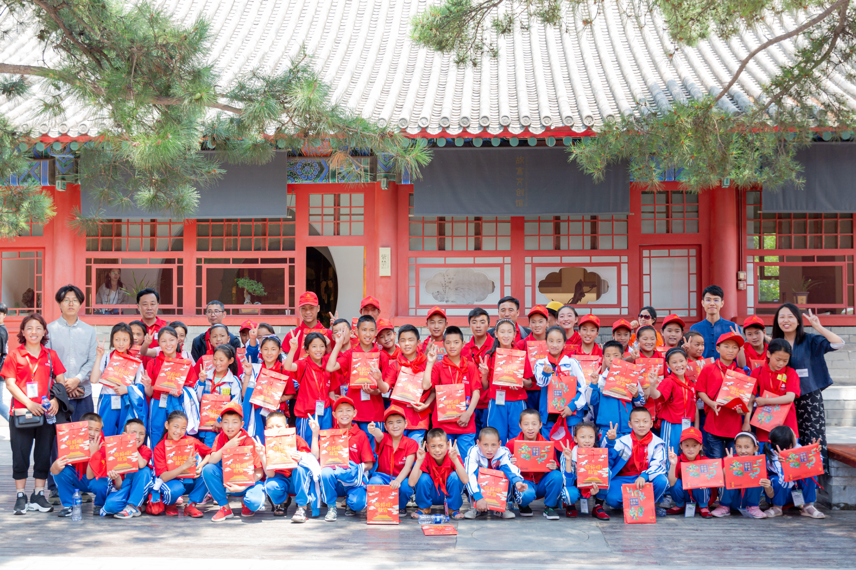 The Forbidden City and the “Red Ribbon” jointly held a charity event
2. Multi-dimensional Exploration of Children’s Heritage Education——Take Dali Dong Village in Guizhou as an example (China, Guizhou)
1) Introduction
This project involves heritage experts, educators, artists, local cultural figures and folk artists in creating picture books based on Dali Dong Village, aimed to provide a variety of quality cultural heritage educational programs for both local and non-local children in multiple learning environments including family education, school education, and community education. In the process, children learn from their own life experiences and adults achieve self-improvement via teaching. They form a two-stranded chain that supports each other, becoming a key driving force in the sustainable development of heritage education.
In 2016, the picture book team cooperated with the Global Cultural Heritage Protection Foundation to create picture books based on the life of children living in Dong village of Guizhou. In 2019, the picture book “Looking for the Golden Rooster” was published. The picture book described the story of a Dong little girl and her friends looking for the golden rooster together, which is inspired and influenced by architecture features, folklore, customs, traditional settlements and costumes by the Dong nationality. After the picture book was published, the team donated the picture book to the children in schools in Dali Village. At the same time, book reading and educational activities were held in Rongjiang, Kaili, Tongren, Guiyang, which has received welcome by the local children, schools, and cultural circle.
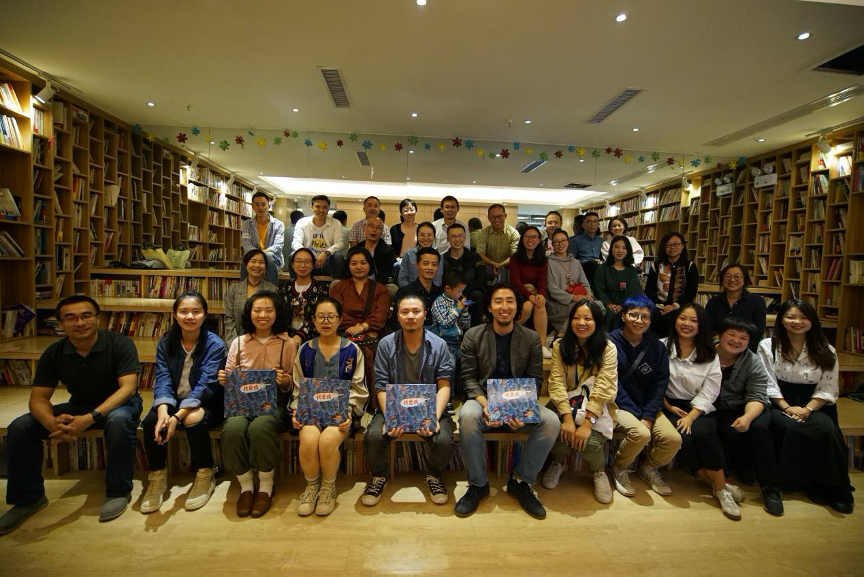 The team of the picture book “Finding the Golden Rooster”
In 2020, with the support of the Rongjiang County Education Administration and Oxfam Hong Kong, four village schools participated in the aesthetic education courses based on the picture book as the first group of participating schools. In 2021, the aesthetic education team will organize a national aesthetic education Teachers’ Co-Creation Camp in Guizhou. After a year of aesthetic education practice, teachers will cooperate with local cultural researchers to further develop localized courses using local natural and cultural resources. Besides, all the courses produced by the camp will be applied in the classrooms of rural primary schools in other parts of the country through the Helin Aesthetic Education Network.
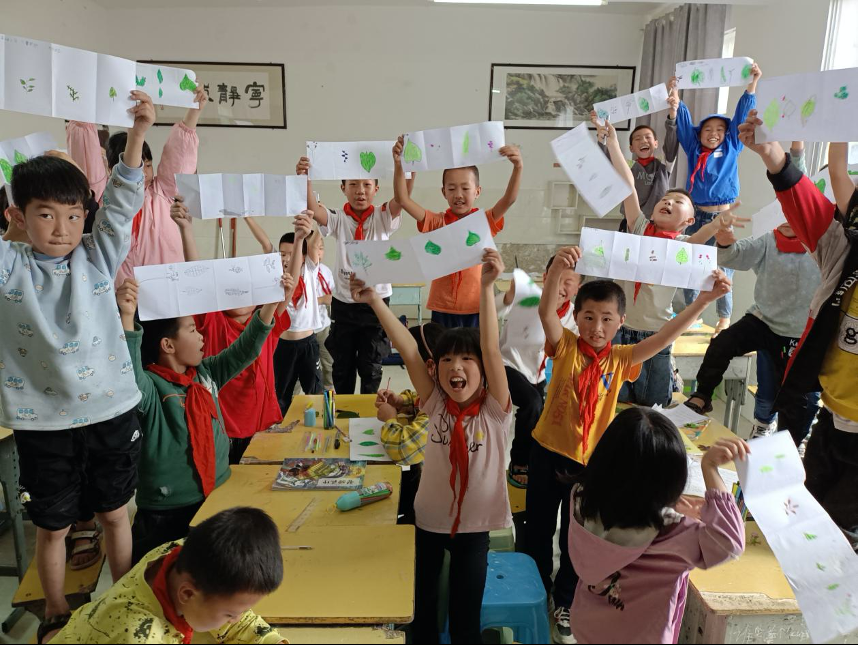 Aesthetic education classroom in the third grade of Gaodong Primary School
2) Technological Application
This project uses quality video courses to reach the teachers and students of rural primary schools, as well as the mass families through the Internet. With the purpose of improving education equality, it provides high-quality heritage education courses for both urban and rural children. Besides, this project promotes the dissemination and sharing of cultural heritage curriculum resources in different regions through the network platform of aesthetic education educators, and supports educators in different regions to communicate.
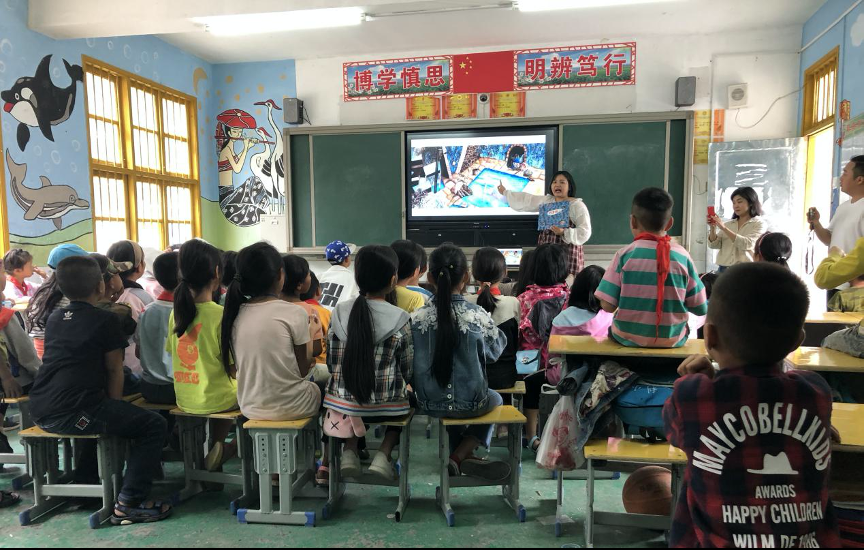 The main creative team of the picture book read “Finding the Golden Rooster” to the pupils
3) Exemplary Significance
Aesthetic education is a critical initiative proposed by the central government to improve national literacy, and it is an ideal interface for the localized application of heritage education. Aesthetic education courses are derived from the picture book, which systematically explains highly condensed art works in form and content, and is embedded in the school’s aesthetic education system. While meeting the daily teaching needs, it stimulates teachers and students’ pride in the local culture, and gradually deepens the understanding and thinking of the relationship between the culture and self in the process of exploration.
Whether in the process of picture book creation or the design of aesthetic education courses, this project adopts a co-creation model, introducing external professionals to local forces, recruiting academic experts, cultural researchers, educators, artists and social workers, exhibiting the process and outcomes of co-reaction in local communities, and promoting rich and open-ended applications in society. Through sustainable practical projects, it promotes a community that continues to generate creativity in promoting heritage protection, education equality, and community development.
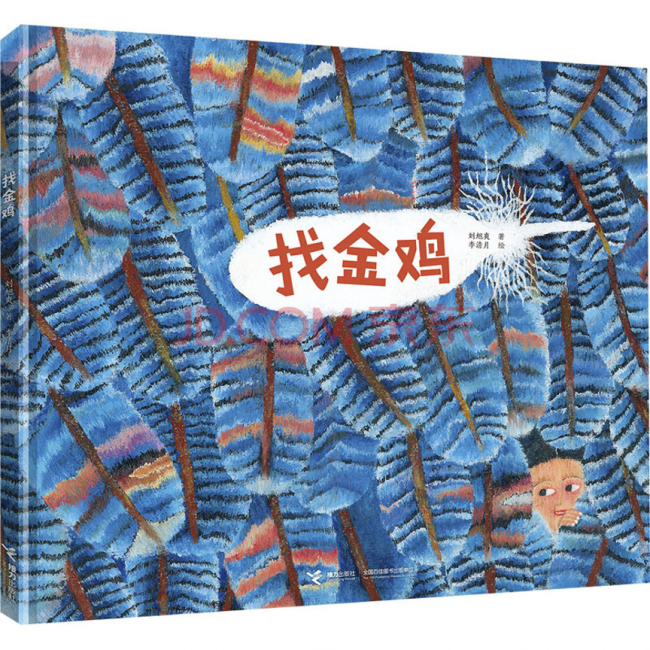 The picture book “Finding the Golden Rooster”
III. Conclusion
In this issue of the presentation of outstanding cases, two case studies from China demonstrate the useful experience of rationalizing the use of Internet and digital technology to involve more people online and offline in heritage education. These programs not only promote their impact through a combination of online and offline approaches, but also raise people’s awareness of the sustainable development of heritage conservation.
We sincerely wish heritage education practitioners and participants could learn from and get inspired by this presentation of outstanding cases. It would be encouraging to us if the five features summarized above could provide insights to tailor-made innovation practices in the future. The completion of the case collection marked yet another beginning. In the future, we will continue our efforts from here and make endeavors to establish an international network for WHE cooperation and exchange, thus contributing to the innovation of heritage education and the all-around and sustainable development of the heritage sites.
In the next issue, we will present two outstanding cases: “Innovative Exploration and Practice of World Heritage Education of Danxiashan” and “Cangdong Heritage Education Center” (China, Guangdong). We will discover their innovative features in “discovering heritage values and using education as an empowering tool to promote the creative innovative and sustainable development of heritage sites”.
Contributed by: WHITRAP Working Group
Edited by: He Yixuan, Zhang Yiyang
|
- News | WHITRAP Shanghai and CNR-ISPC bilateral meeting
- News | WHITRAP meets Cité de l’Architecture et du Patrimoine
- WHITRAP Hosting "Workshop on Preliminary Assessment for National Focal Points of the Asia Region" in Chengdu
- WHITRAP Shanghai meets UNESCO
- INTERNATIONAL CONFERENCE PRELIMINARY ANNOUNCEMENT & CALL FOR PAPERS
- Observation of the 46th Session of the World Heritage Committee
Copyright © 2009-2012 World Heritage Institute of Training and Research-Asia and Pacific (shanghai)


